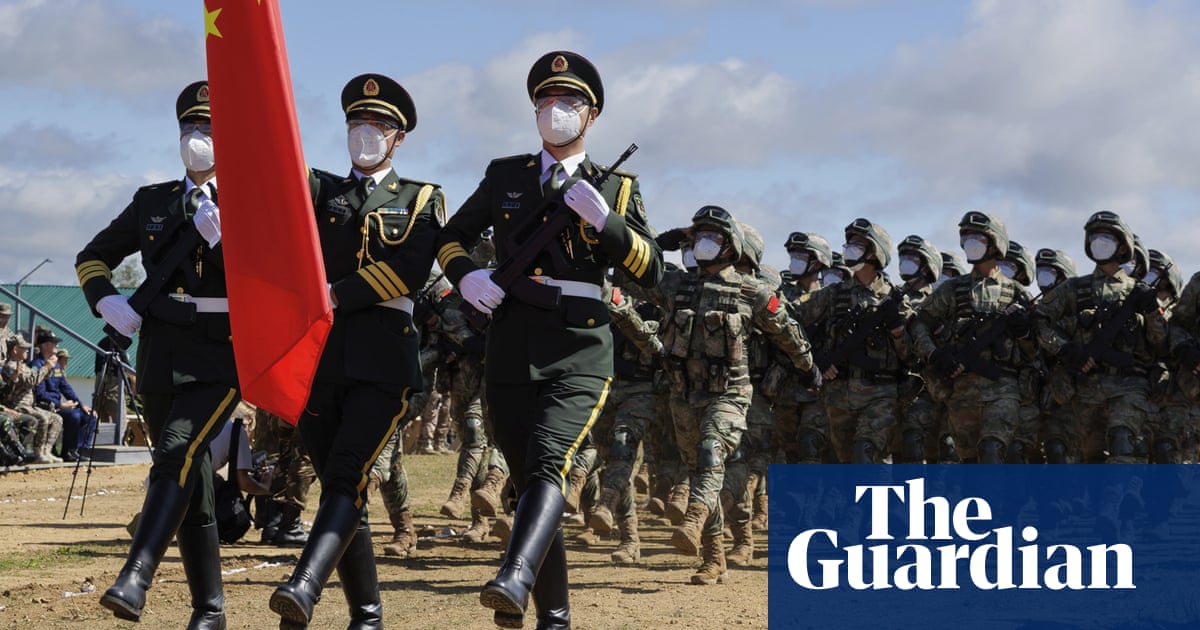Show caption Chinese troops march during the Vostok 2022 military exercise at a firing range in Russia’s far east. Photograph: Vadim Savitsky/AP World news Russia and China launch large-scale military drills amid tensions with US Drills involving several allied nations showcase increasing defence ties between Moscow and Beijing Associated Press in Moscow Thu 1 Sep 2022 16.13 BST Share on Facebook
Share on Twitter
Share via Email
Russia and China have launched large-scale military exercises involving several allied nations, in a show of growing defence cooperation between Moscow and Beijing as they both face tensions with the US.
The manoeuvres are also intended to demonstrate that Moscow has sufficient military might for massive drills even as its troops are engaged in fighting in Ukraine.
The Russian defence ministry said the Vostok 2022 (East 2022) exercise would be held until 7 September at seven firing ranges in Russia’s far east and the Sea of Japan and involve more than 50,000 troops and 5,000 weapons units, including 140 aircraft and 60 warships.
The chief of the Russian general staff, Gen Valery Gerasimov, will personally oversee the drills, involving troops from several ex-Soviet nations as well as China, India, Laos, Mongolia, Nicaragua and Syria.
The defence ministry noted that as part of the manoeuvres, the Russian and Chinese navies in the Sea of Japan would “practice joint action to protect sea communications, areas of marine economic activity and support for ground troops in littoral areas”.
Beijing sent more than 2,000 troops, more than 300 military vehicles, 21 combat aircraft and three warships to take part in the drills, Chinese news reports said.
China’s Global Times newspaper noted that the manoeuvres marked the first time that China had sent forces from three branches of its military to take part in a single Russian drill, in what it described as a show of the breadth and depth of China-Russia military cooperation and mutual trust.
The drills showcase increasing defence ties between Moscow and Beijing, which have grown stronger since the Russian president, Vladimir Putin, sent his troops into Ukraine on 24 February. China has pointedly refused to criticise Russia’s actions, blaming the US and Nato for provoking Moscow, and has condemned the punishing sanctions imposed on Moscow.
Russia, in turn, has strongly backed China amid the tensions with the US that followed a recent visit to Taiwan by the US House speaker, Nancy Pelosi.
Alexander Gabuev, a political analyst who closely follows Russia-China ties, said: “It’s very important for Beijing to show to the US that it has levers to pressure America and its global interests. The joint manoeuvres with Moscow, including the naval drills, are intended to signal that if the pressure on Beijing continues it will have no other choice but to strengthen the military partnership with Russia.”
The exercise continues a series of joint war games by Russia and China in recent years, including naval drills and patrols by long-range bombers over the Sea of Japan and the East China Sea. Last year Russian troops for the first time deployed to Chinese territory for joint manoeuvres.
